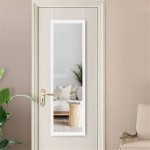Rotating Mirror Disco Ball
The rotating mirror disco ball is an iconic symbol of dance, celebration, and nightlife. Its mesmerizing display of reflected light transforms any space into a pulsating, energetic environment. This article explores the history, construction, and practical applications of these fascinating objects.
History of the Disco Ball
While often associated with the disco era of the 1970s, the use of mirrored spheres for light reflection predates this period by decades. Early examples can be traced back to the late 19th century, where they were utilized in nightclubs and ballrooms. The term "mirror ball" appears in a 1924 Boston newspaper account describing a New Year's Eve party. Throughout the early to mid-20th century, these shimmering spheres continued to be featured in entertainment venues. The rise of disco music in the 1970s cemented their status as a cultural icon, becoming synonymous with the era’s vibrant nightlife.
The increasing popularity of disco music led to a surge in demand for mirror balls. They became a staple feature in discotheques worldwide, contributing significantly to the immersive and energetic atmosphere that defined the era. While their prominence waned somewhat following the decline of disco in the early 1980s, mirror balls have maintained a persistent presence in popular culture, experiencing periodic resurgences in popularity and continuing to be a favored decorative element for parties and events.
Construction and Design
A disco ball is typically a sphere made of a lightweight core material, often plastic or foam. This core is covered with hundreds or thousands of small, flat, mirrored tiles. These tiles, traditionally made of glass, are precisely cut and arranged to reflect light effectively. The size of the tiles can vary, impacting the overall visual effect. Smaller tiles create a more intricate and delicate light pattern, while larger tiles produce bolder, more distinct beams of light.
The arrangement of the tiles is crucial for achieving the desired reflective effect. They are typically arranged in a regular pattern, ensuring consistent light dispersion. The quality of the glass used for the mirror tiles also plays a significant role in the overall brilliance and reflectivity of the disco ball. Higher quality glass yields sharper, brighter reflections, enhancing the visual impact.
Modern manufacturing techniques often utilize vacuum metallization to create the reflective surface on the tiles. This process involves depositing a thin layer of metal, typically aluminum, onto the back of a plastic film. This film is then adhered to the core material, resulting in a lighter and less fragile disco ball compared to those constructed with traditional glass tiles.
Practical Application and Effects
The primary function of a rotating mirror disco ball is to reflect and scatter light. A single light source, typically a spotlight, directed at the rotating sphere generates numerous beams of light that project across the surrounding space. The rotation of the ball causes these beams to move dynamically, creating the characteristic shimmering and pulsating effect. The speed of rotation influences the speed and intensity of the light patterns. A slower rotation produces a more languid, dreamlike effect, while a faster rotation creates a more energetic and vibrant atmosphere.
The effectiveness of a disco ball’s light display is dependent on several factors. The intensity and color of the light source significantly impact the overall visual experience. Colored spotlights can create dramatic effects, washing the surrounding area in vibrant hues. The ambient lighting of the environment also plays a role. A darker environment allows for a more pronounced contrast between the reflected beams and the surrounding space, maximizing the visual impact of the disco ball.
Beyond their traditional use in nightclubs and discotheques, rotating mirror disco balls have found applications in various other settings. They are frequently used for home decoration, adding a touch of sparkle and glamour to any space. They are also popular for parties and events, creating a festive and celebratory atmosphere. Their enduring appeal is a testament to their unique ability to transform any setting into a dynamic and visually engaging environment.
The size of the disco ball also plays a significant role in its visual effect. Larger balls create a broader spread of light, covering a wider area, while smaller balls are better suited for more intimate spaces. Choosing the appropriate size is crucial for achieving the desired effect and maximizing the visual impact in a given environment.

18 Led Lights Glass Rotating Mirror Disco Ball Motor Sound Control Reflection Hanging For Dj Party Stage Light Fruugo Tr

30cm Rotating Mirror Disco Ball Stage Light With Colorful Reflection Fruugo Tr

18 Led Lights Glass Rotating Mirror Disco Ball Motor Reflection

30cm Mirror Disco Ball Stage Light Rotating Glass Big Party Decorations Ktv Bar Dj Lighting Reflection Colorful Fruugo Tr

Mirror Balls 6 Inch Free Standing Rotating Ball Kit

Gustve Glass Mirror Ball Reflective Rotating Hanging Disco 8 Inch Stage Effect Decoration Ktv Party Lights Com

Mirror Ball Rotating Disco 6rpm Electric Motor Base With Multi Colored S

Revolving Rotating Mini Mirror Disco Ball Light For Home Temu Austria

Rave Sl2916 Rotating Disco Ball Radio Parts

18 Led Lights Rotating Heavy Duty Motor For Mirror Disco Ball Black








